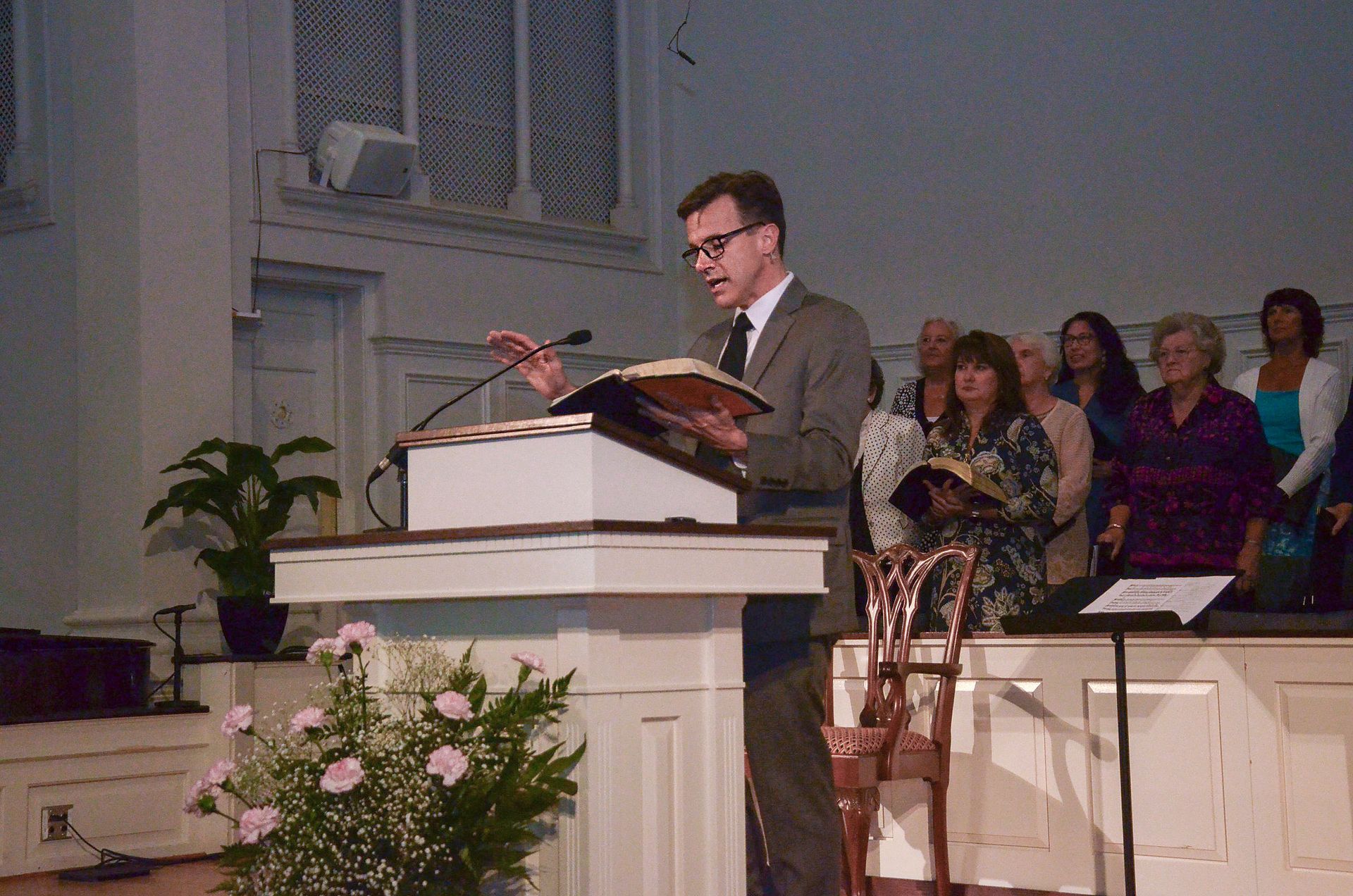By Paul Gilliam
•
December 6, 2023
Dear Winter Park Family, Winter Park Baptist Church experienced a glorious start to the advent season last Sunday (12-3-2023). Combining our worship services into one enabled our church family to nearly fill our large sanctuary. We had all ages together under one roof for the worship of God. In fact, what a treat it was for everyone to witness two of our children profess faith in Jesus the Christ. The music we offered to God as expressions of worship was rich and diverse. Even if some of the music or the time of our gathering did not reflect your personal preferences, there is no doubt we were all blessed by God on the first Sunday of advent. As we progress together through advent, I want to say a few words about the faces, plural, of advent. Indeed, advent has more than one face. In fact, I suggest three. The word advent itself, from the Latin adventus , means “coming”. So, during the advent season, which begins the Christian liturgical year, the church focuses its attention on the coming of Jesus into the world. When we ponder Jesus’ coming into the world our first, and often only, stop is Jesus’ birth. The accounts of Jesus’ birth are found in Matthew’s gospel and Luke’s gospel. And, indeed, our worship services will center of the theme of Jesus’ birth. From the pulpit we will consider Luke’s account of Jesus’ birth. Perhaps next year we will engage Matthew’s account. However, there are at least two other faces to advent – to Jesus’ coming. In addition to his initial coming as a baby born of the virgin Mary, now the church awaits Jesus’ future coming. Jesus speaks of this coming in Mark 13 (see parallels in Matthew 24 and Luke 21). Mark 13 is often referred to as the little apocalypse. Here Jesus predicts the destruction of the Jerusalem temple which occurred in 70AD in the Jewish war with the Romans. If you are interested in an account of this war, see Josephus’ Jewish War . After Jesus’ prediction of the temple’s future fall, Peter, James, John, and Andrew ask Jesus for more details. Jesus speaks of difficult times and dark days before and during the destruction of the temple. Then Jesus employs well-known apocalyptic imagery found in places such as Isaiah 13:10, Ezekiel 32:7, Joel 2:10, Joel 2:31, and Joel 3:15. He says, “But in those days, after that tribulation, the sun will be darkened and the moon will not give its light, and the stars will be falling from heaven, and the powers that are in the heavens will be shaken. Then they will see the Son of Man coming in clouds with great power and glory. And then he will send forth the angels, and will gather his elect from the four winds, from the farthest end of the earth to the farthest end of heaven” (Mark 13:24-27). Jesus here refers to himself with the phrase, “Son of Man”. Jesus then follows these words with the parable of the fig tree (13:28-33) and the man away on a journey (13:34-37). Jesus’ point: be alert and be prepared for his post-resurrection coming! Now, of course, we must deal with the obvious. There has been no temple standing in Jerusalem for roughly 1,953 years. And there has been no return of Jesus. For some people this is a serious problem, a deal breaker even. I, however, find Peter persuasive on this point. In 2 Peter 3, Peter acknowledges critics who say, in essence, where is this Jesus? There has been no sight of his return and the world just continues on. Peter responds by quoting Psalm 90:4. He writes, “But do not let this one fact escape your notice, beloved, that with the Lord one day is like a thousand years, and a thousand years like one day. The Lord is not slow about His promise, as some count slowness, but is patient towards you not wishing for any to perish but for all to come to repentance” (2 Peter 3:8-9). God’s sense of time is different from our sense of time. In the Old Testament, the Day of the Lord is a prominent concept (Zephaniah 1:14-18; Jeremiah 46:10-12; Isaiah 13:9-11; and many other places). The Day of the Lord is when God fully intervenes in our affairs and makes every wrong right. On the Day of the Lord, there are no more injustices, no more hunger, no more pain, no more war, and every tear wiped away. Early Christians then incorporated Jesus’ future return into the Old Testament concept of the Day of the Lord (see, for example, 1 Corinthians 15:20-28). And so we wait, and we prepare ourselves, for the Day of the Lord with the return of Christ. Good stuff indeed! This is also a face of advent. Earlier I said there were at least two other faces to advent in addition to Jesus’ first coming as a baby born of the virgin Mary. The second face, as discussed in some detail above, is Jesus’ future coming. And a possible third face is the coming of Jesus’ public ministry announced by John the Baptist. In Mark 1, John the Baptist appears preaching and baptizing. He then baptizes Jesus. Mark 1:14-15 declares the coming of Jesus’ public ministry, “Now after John had been taken into custody, Jesus came into Galilee, preaching the gospel of God, and saying, ‘The time is fulfilled, and the kingdom of God is at hand’ repent and believe in the gospel.’” Now Jesus’ public ministry to the masses is underway. He has come to preach and teach and heal. To enrich our 2023 advent season, I make you aware of the three faces of advent. Here they are – this time in chronological order: 1) Jesus’ coming as a baby born of the virgin Mary, 2) the coming of Jesus’ public ministry announced by John the Baptist, and 3) the future coming of Jesus at the Day of the Lord. In Christ, Paul










